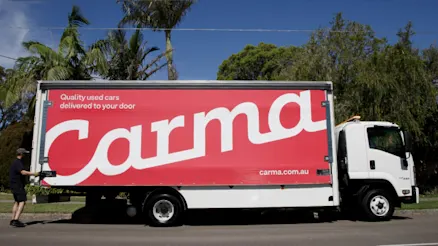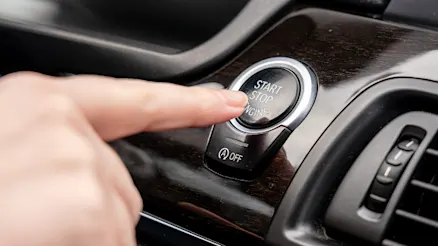
Carvana doesn’t operate in Australia - but Carma does
Is Carvana available in Australia? The short answer is no. But Carma brings the same home delivery experience to Aussie drivers. We are the preferred used car dealership of the NRMA.

From coastlines to the bush, towing a caravan allows you to take your home with you wherever you go. But before you hitch up and hit the road, safety must come first. Whether you’re new to caravanning or have some experience, here are essential tips to ensure a safe and smooth journey on Australia’s roads.
Before you load up your caravan with all your holiday essentials, make sure your car can handle the caravan’s weight. Every car has a specific towing capacity, and exceeding it can lead to dangerous situations. In Australia, it’s also required by law to stay within these limits. Check your owner’s manual or build plate (on the side of your doors) to find out its maximum towing capacity, and always factor in the weight of everything you're carrying, not just the empty caravan.
If you’re looking for a refresher on all things towing, we’ve got just the guide on how to calculate your towing capacity. Or if you’re towing a trailer instead, here’s all you need to know about towing a trailer safely.
Safe towing always starts with proper loading. Distribute weight evenly, aiming to place about 60% of the load toward the front of the caravan. Heavier items should be placed low and secured, while lighter items go higher. You’ll also want to avoid overloading, as an uneven load can cause the caravan to sway, especially at high speeds on highways or out on regional roads.

Ensure your tow ball, hitch, and connections are all in good condition and correctly attached. Regularly check the tow ball and hitch for wear, and ensure your electrical wiring is properly connected to power your caravan’s lights and indicators.
In terms of tyre safety, both your car and caravan tyres need to be in great condition before towing. This means checking the tread depth and ensuring they’re properly inflated. Under-inflated tyres can lead to poor handling and compromise grip and control, something you won’t want happening, especially on longer trips.
In Australia, it’s a legal requirement to have clear visibility of what’s behind you when towing. Standard mirrors may not be enough, so if your caravan doesn’t already come with some, fit towing mirrors to give you the extended view you need. This helps with monitoring traffic, changing lanes safely, and keeping an eye on your caravan while driving.
If you’re new to towing, practice makes perfect! Caravans can significantly change how your car handles, especially when reversing or making tight turns. Find a safe open space to practise reversing and get familiar with how your caravan behaves. Reversing with a caravan can be tricky. Turn the steering wheel in the opposite direction to where you want the caravan to go and move slowly.
Caravans also require more room when turning, so take corners wide and slowly to avoid hitting curbs or obstacles. When braking, avoid sudden stops and leave more space between yourself and the car in front of you for safe stopping.
Before starting your journey, do a final check of your caravan and tow vehicle. Make sure all doors, windows, and hatches are securely closed, and that your handbrake is off. Test the brake lights, indicators, and other signals. This simple check can prevent unexpected issues while driving, especially if you’re heading off into more remote parts of Australia where help may be far away.
Ready to hitch up? Explore our off-roading beasts or family-friendly SUVs to get you excited to hit the great outdoors.

Is Carvana available in Australia? The short answer is no. But Carma brings the same home delivery experience to Aussie drivers. We are the preferred used car dealership of the NRMA.

Ever notice your car feels different in the morning? Learn why cold starts affect performance and how to keep your car running smoothly year-round.

Regularly checking your tyre pressure is crucial to your vehicle’s safety, fuel economy and optimal driving.